
Sunrise. Attempts to visually see the crescent before sunrise failed.
Version 14. June 2010, Martin Elsässer
Thierry Legault has done a very similar observation in April 2010, observing a the very moment of geocentric conjunction. His observing technique was essentially the same as mine, though he used a static baffle, not moving with the telescope. The elongation during this observation was about 0.02° closer than during my older observation. Congratulations!
The lunar crescent was imaged during the day in visual / near-IR light under reasonable blue skies at the Munich Public Observatory (longitude=11.6069E, lattitude=48.1217N, height=550m), using a specially prepared telescope and optimized camera system. The crescent could be captured just minutes from conjunction.

Sunrise. Attempts to visually see the crescent before sunrise failed.
Choose your definition:
An animation of the motion of sun and moon during the hours of observation can be found here: Sun and Moon video.
The edges of the images in the animation are aligned with the coordinate axis. The animation shows how the illuminated part of the moon (=crescent) moves along the edge of the lunar disk, first pointing to the left, later pointing down. That effect can also be seen in the captured images.
The equipment used:
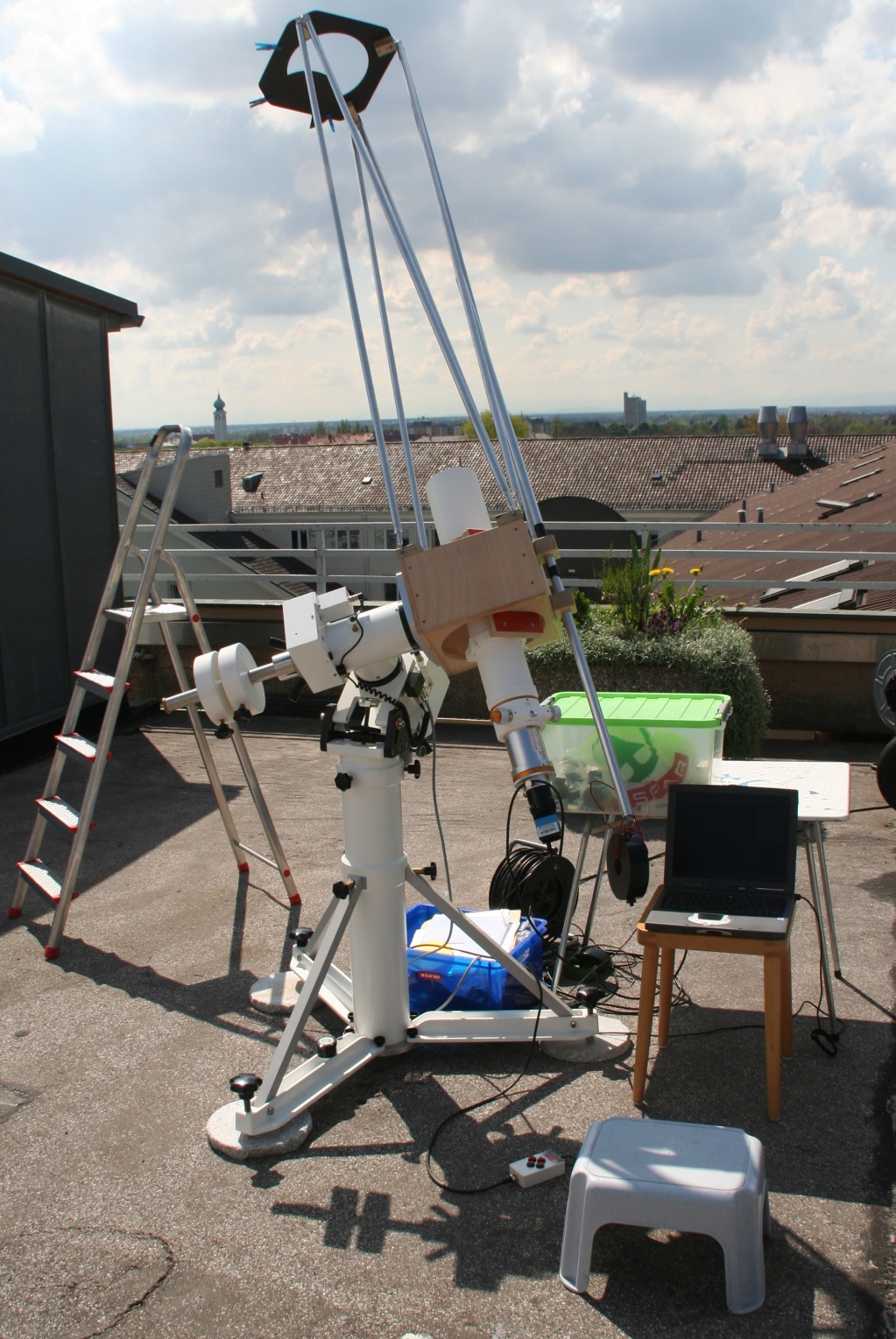
The setup of the equipment.
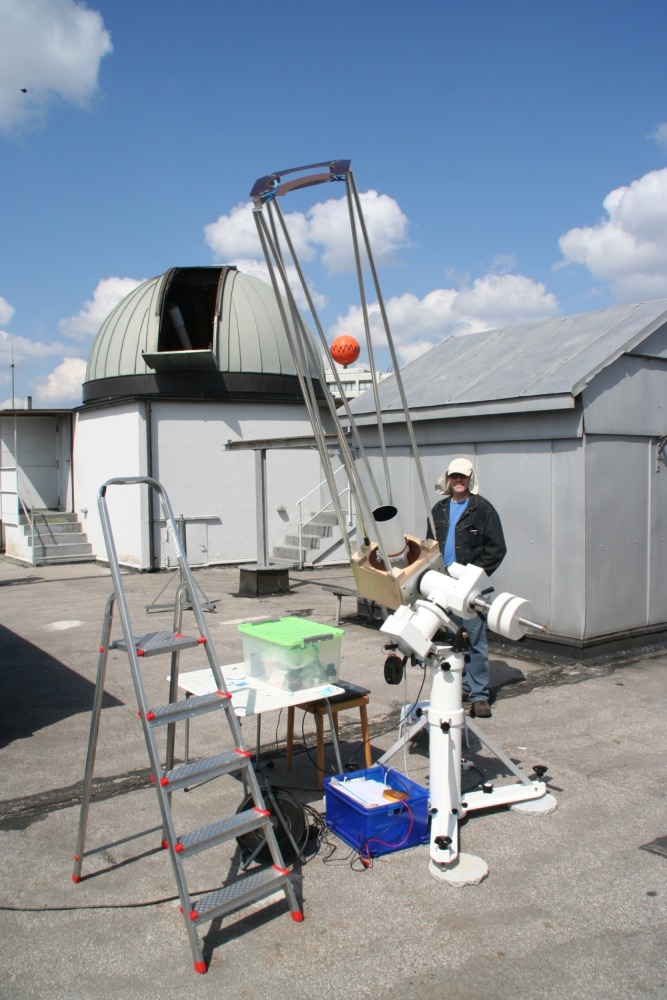
The observing location, at the Volkssternwarte Muenchen. The cupola with the 7 inch refractor can be seen in the background, the hut holds a 16 inch mirror telescope.
My colleague Markus Bentz (seen above) provided the vital mount and joined me during the long observation session. Many thanks to him for his exertions!
The same synergy was successfull last year, too.
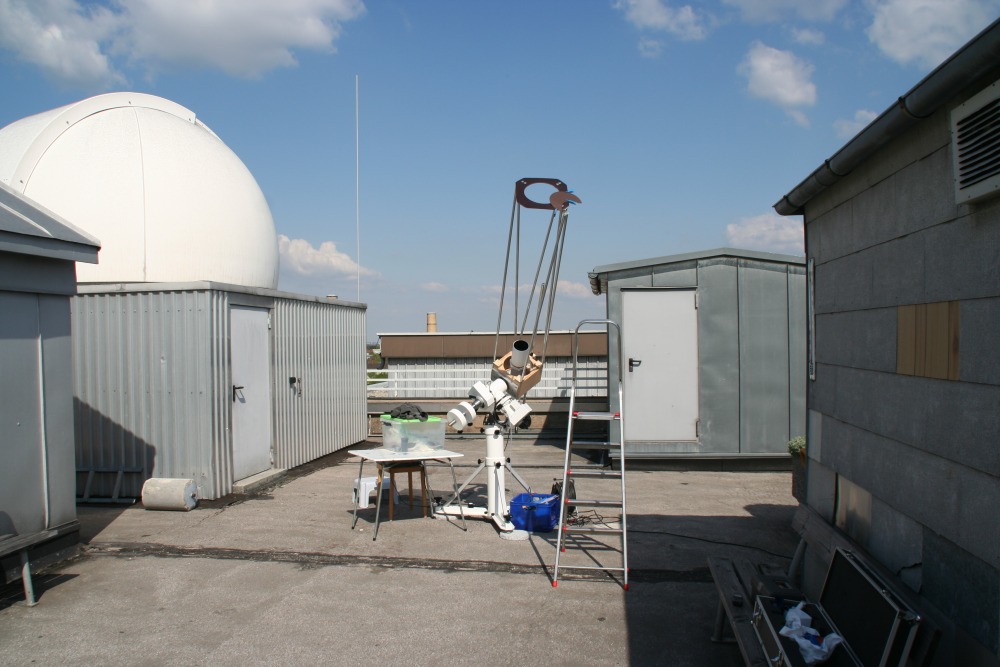
Later view of the observing location, at the Volkssternwarte Muenchen. The cupola holds the 10 inch refractor, the small hut holds our 32 inch mirror telescope.
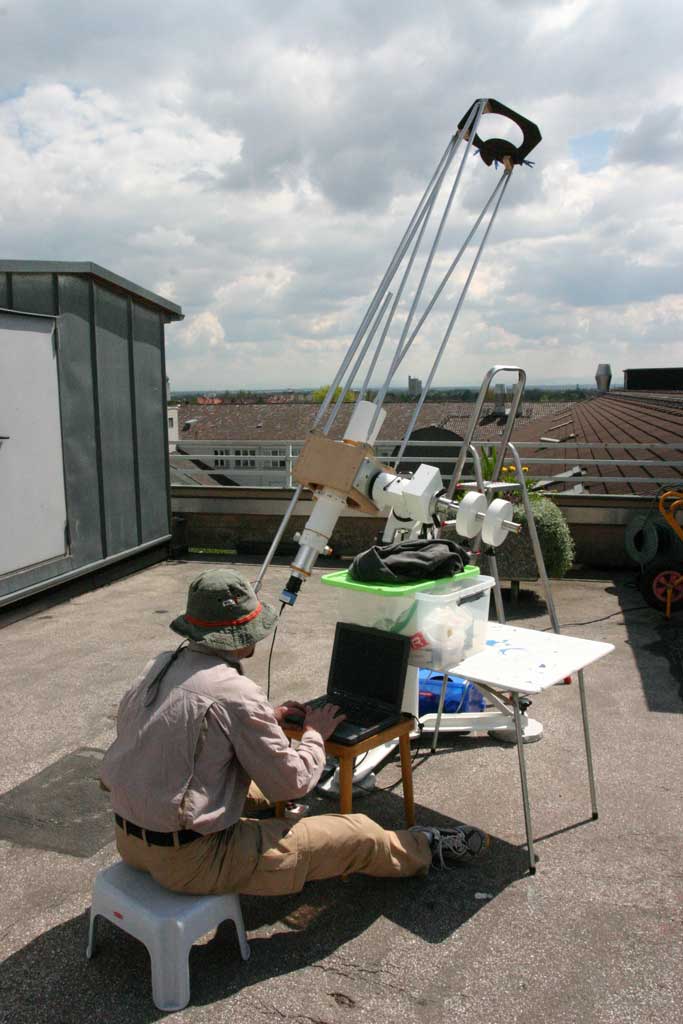
Imaging and processing images, just minutes before conjunction.
I processed the image series right after capturing, which took some 8 minutes in full manual mode.
All images were captured through the Williams FLT110, at 770mm focal length. Some images were scaled down for the web. (I have not yet had the time to do a more thorough processing on all the image-series captured on Monday.)
The camera was aligned with the coordinate axis, so right is west and up is north in all images.
Due to the numerous technical means required to capture this faint lunar crescent, these images probably do NOT show what could be seen through a telescope. It is quite possible that the lunar crescent will never be visible to human eyes from earth at these elongations, due to the low contrast. Of course, the lunar crescent is still there, even if we can not see it with the naked eye. The main reason for using cameras is to capture things the eye could not see and to document these, too.
First half of ALL crescent images (10 MB)
Second half of ALL crescent images (6 MB)
Simulated crescent images
Some hours before conjunction our images still showed a 90° arc of the crescent, despite the elongation already being below 5°. So much for the Danjon limit.
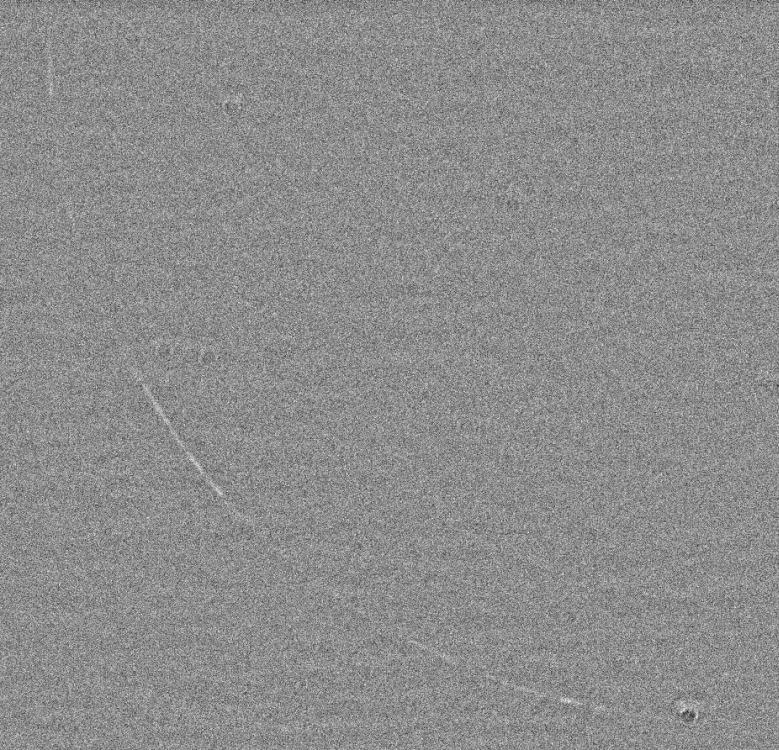
The crescent at 10:51 (UT+2). A 90° arc is visible, less than 3.5 hours before conjunction, at an elongation of 4.72°.
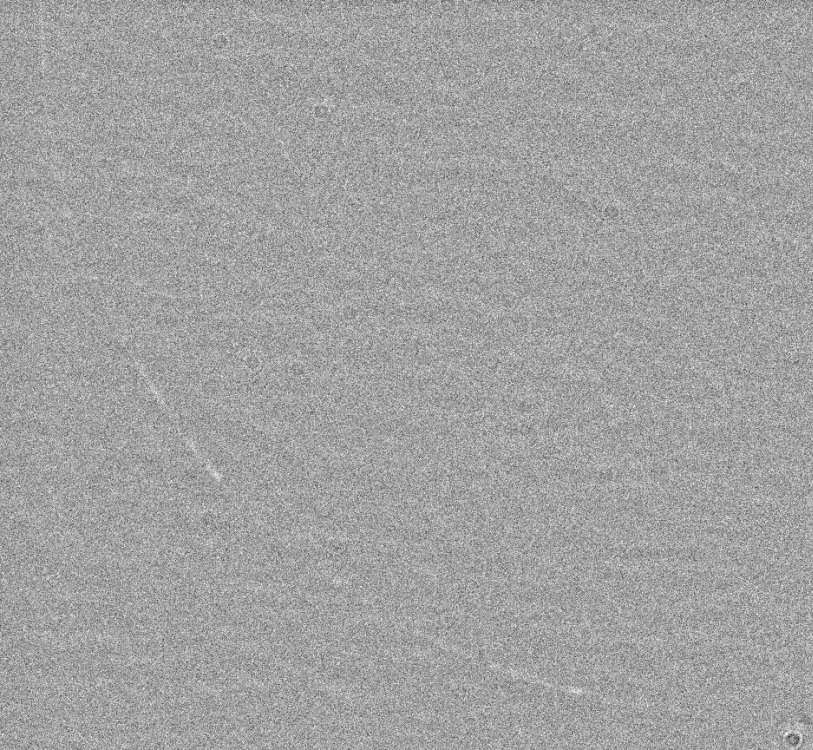
The crescent at 11:47 (UT+2). The 90° arc is still there, 2.5 hours before conjunction.
Though clouds moved in, we managed to capture the crescent up till 14:13 (UT+2), only 5 minutes from geocentric conjunction, at an elongation of 4.58°.
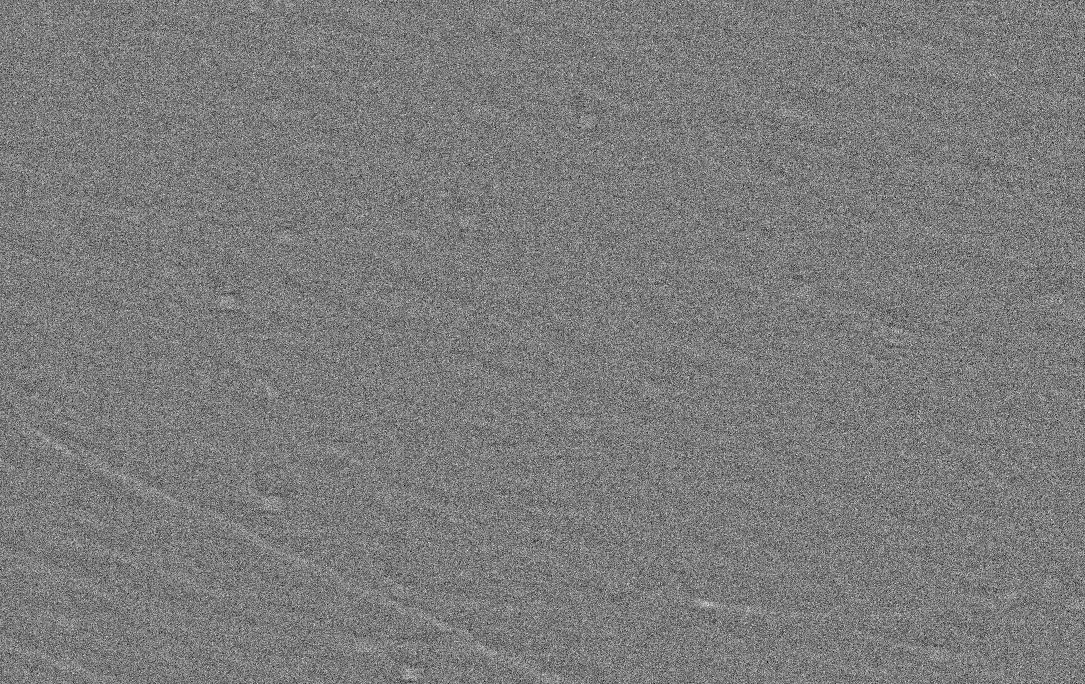
The crescent at 14:02 (UT+2), 4 minutes after topocentric minimal elongation.
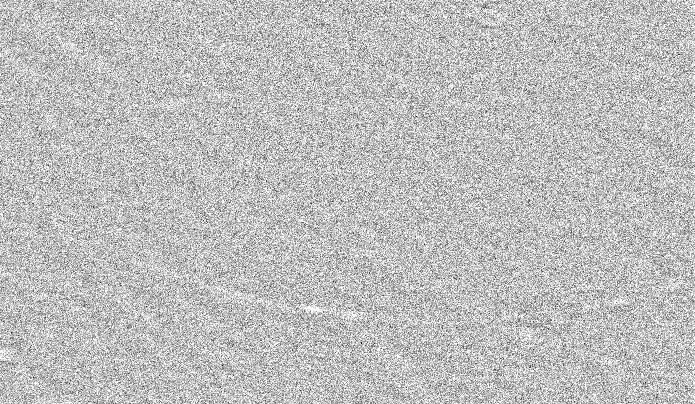
The crescent at 14:08 (UT+2).
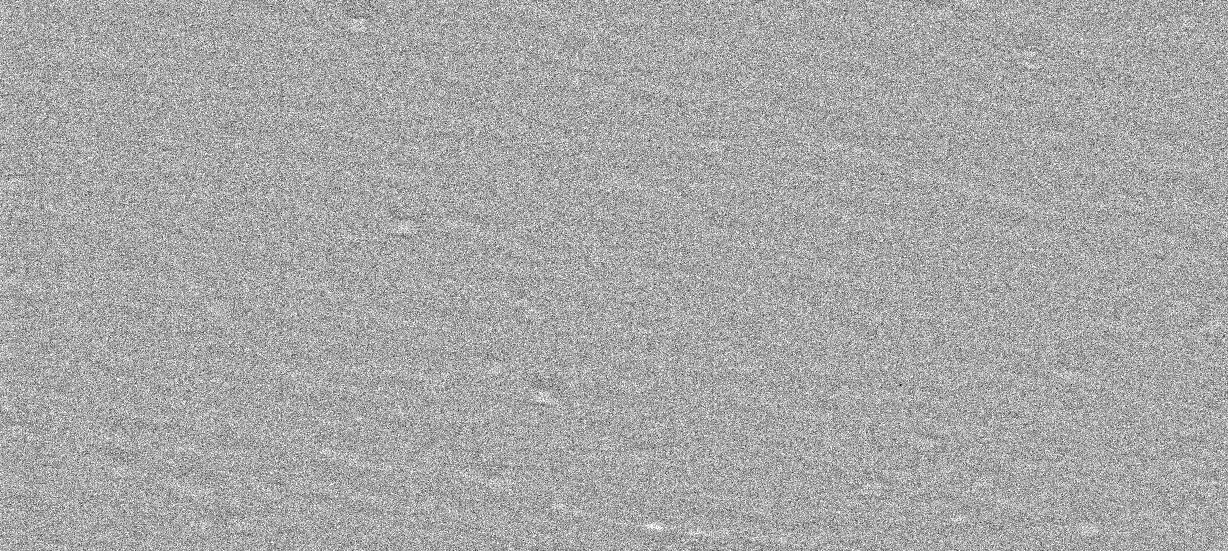
The crescent at 14:13 (UT+2), a few minutes before geocentric conjunction.
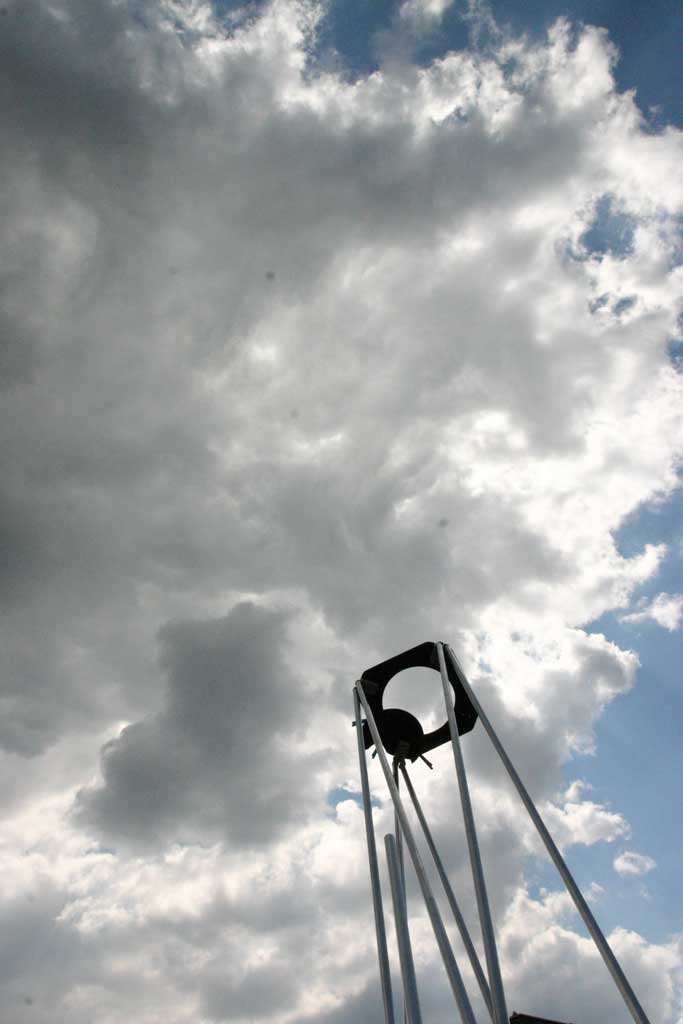
The "Schweinewolke", covering sun and crescent at 14:18 (UT+2), the time of geocentric conjunction and preventing the final "NULL". This cloud stayed in place for 50 minutes.
Due to clouds, the earliest image after geocentric conjunction was not made before 15:02 (UT+2), some 44 minutes after geocentric conjunction. The rotation of the crescent is well visible, when comparing with earlier images. When considering the topocentric conjunction at 15:07 (UT+2), the image taken at 15:03 is 4 minutes before that time.
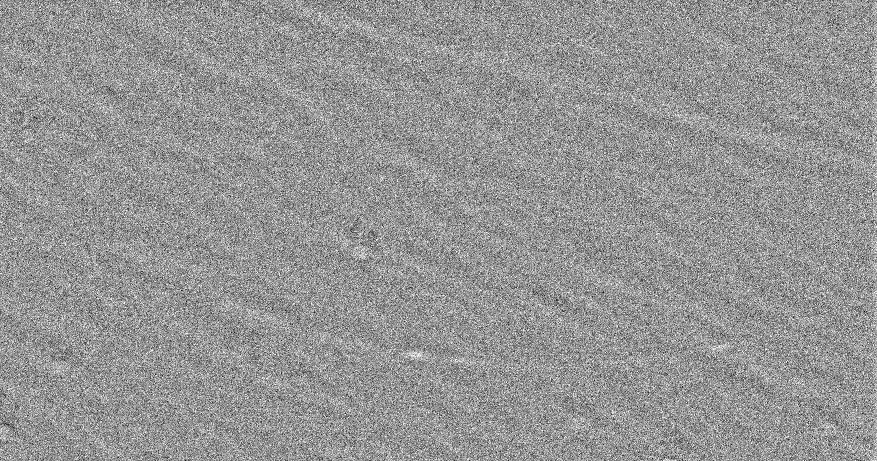
The crescent at 15:03 (UT+2), 45 minutes after geocentric conjunction, 4 minutes before topocentric conjunction.
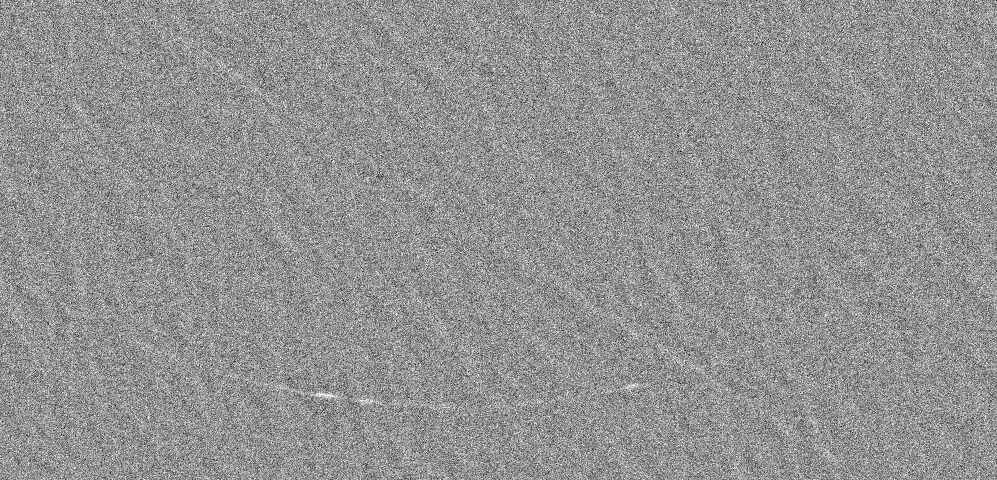
The crescent at 15:50 (UT+2). The orientation of the crescent has changed visibly.
The image series were processed similar to last years methods:
All these steps can probably be done in near real-time to generate and show a augmented live image.
We spent some 12 hours among the telescopes, driving the software and telescope, so we were glad for some company, during the cloud-breaks.
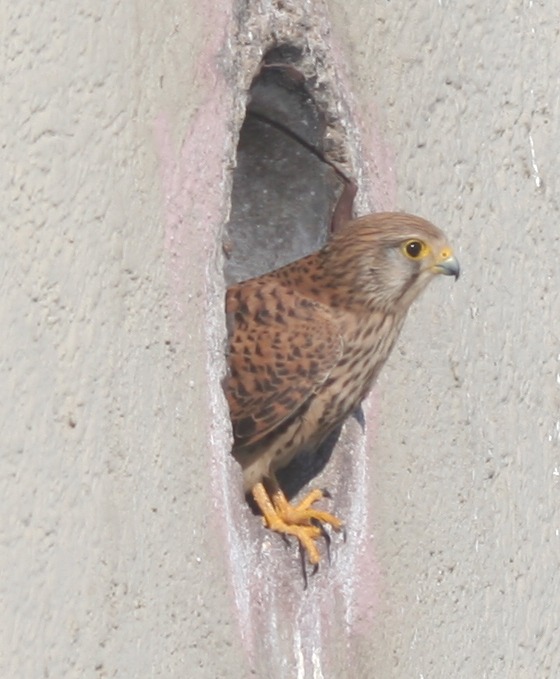
A local hawk, at a nearby building.
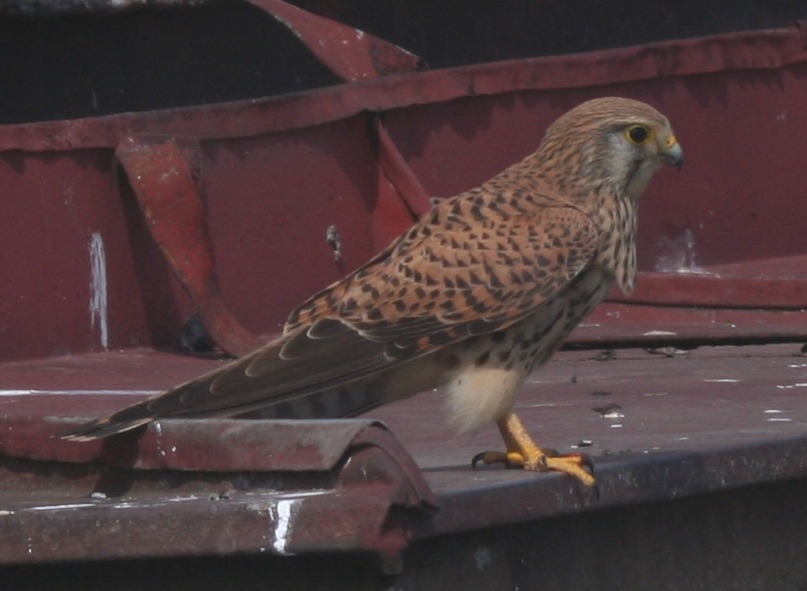
The same hawk, at a different location.

Tornado of the Luftwaffe, rarely seen over munich.